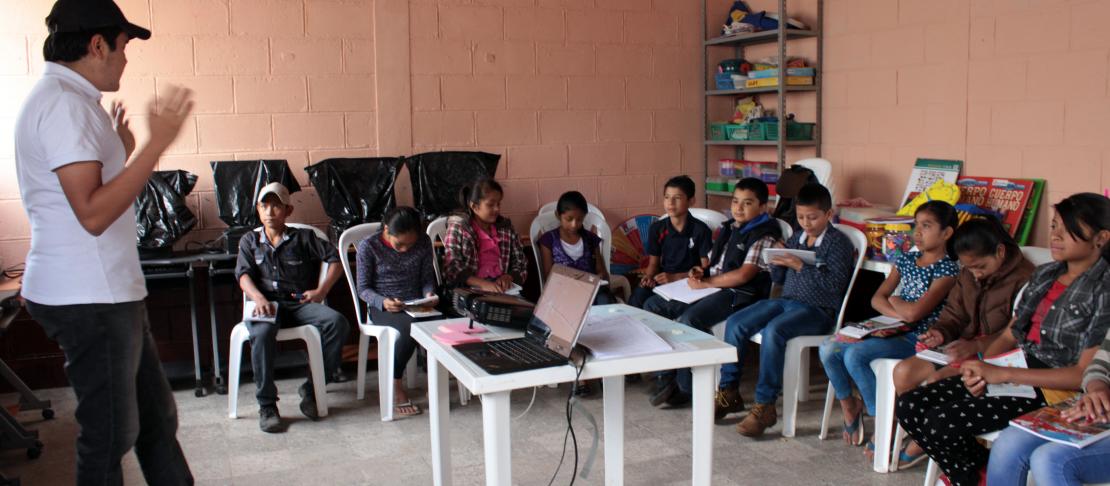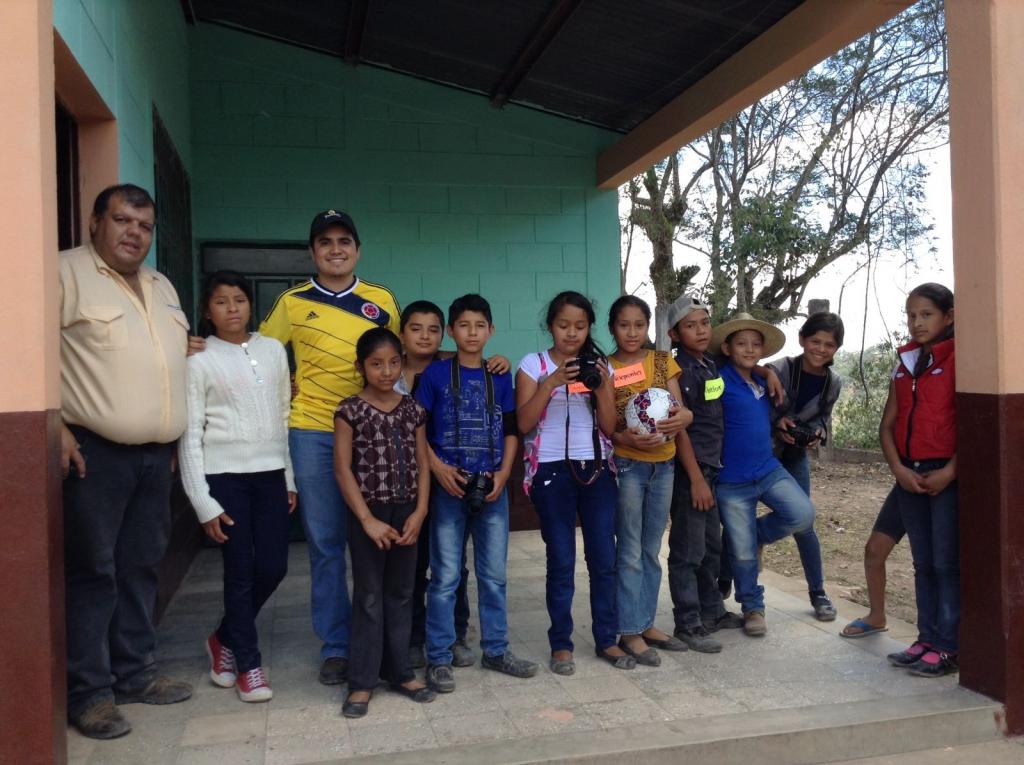Young boys and girls in Guatemala learned about photography, video and climate change

Training to help integrate smallholder farmers and their families to improve their resilience to climate change
Nochán is one of the 62 villages that are part of the Guatemalan municipality of Olopa, and is recently being integrated into the activities that the CGIAR Research Program on Climate Change, Agriculture and Food Security (CCAFS) develops in the context of the Climate-Smart Village (CSV) approach.
One of the first activities carried out with this village was the workshop on climate change, photography and video for youth, which 12 students between 11 and 13 years of the elementary school of Nochán Olopa attended. Boys and girls were eager to learn about how to protect the environment and about new communication tools.
Did you know?
Olotl or "heart of the maize" is the name given by the Guatemalan natives to the corncob. From there comes the name of the municipality of Olopa, which means in Nahuatl "river of heart of the maize."
Although in Latin America Spanish is the common language, each country has a different way of referring to young people: in the first trainings participated pelados from Colombia, and the later workshops were held at the three CSVs in Central America. Chavalos from Nicaragua and cipotes from Honduras received this training, and this time it was the turn for Guatemalan patojos.
The boys and girls attended with their notebooks and pencils like a classroom, but this time they received a special class: first they learned the basic elements of a camera and how to use it. For the practice, they began to try out the functions by themselves and understood how these factors are determinants for the quality of the photos they took.
Attendees to the training. Photo: Carolina del Cid.
The kids also learned how to make a video storyboard, proposing one to show how recycling is one of the most important initiatives that their community is leading, separating recyclable waste and using organic waste to make compost. The result was a video produced and starred by the boys and girls, in which they also made a tour of the main places in their community.
After the filming of the video, the kids received a talk focused on raising awareness about climate change and how it affects agriculture. They learned about the greenhouse effect, what it causes and how we are accelerating this process, besides noting that agriculture is one of the sectors most affected by climate change and variability, but that agriculture also has possibilities to contribute to mitigation.
Before starting the workshop, the youngsters were asked about what they knew about these issues, and at the end of the workshop they were asked again to measure the level of learning achieved. The results were very good, comparing the level of knowledge with which they started the training.
The parents also attended the final part of the training, to see the video that their children made. In addition to the good comments of the work done by their children, they expressed their satisfaction about these activities. It was also the opportunity to invite them to be part of the CSV where other villages in the municipality like El Bendito participate in.
This was the beginning of a series of actions that CCAFS, with the support of local partners such as CATIE and the CopanCh'orti' Commonwealth, develops with these communities to improve the resilience of smallholder farmers to climate change, and make Olopa a Climate-Smart Village.
José Luis Urrea is Communications Officer for CCAFS Latin America.
Special thanks to José Gabriel Suchini of CATIE and Carolina del Cid for their priceless collaboration in the development of the workshop.




